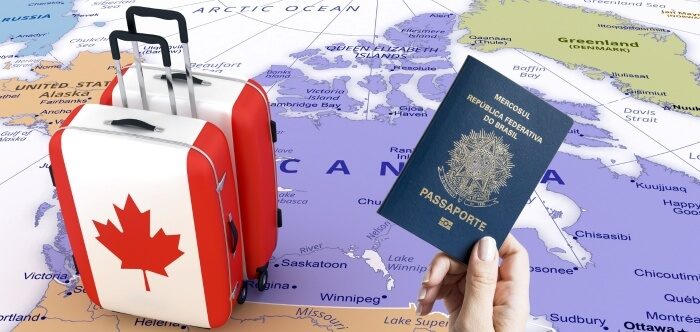Indian Visa On Arrival: A Comprehensive Guide

The process of obtaining an “Indian Visa On Arrival” is a crucial topic for travelers planning to visit India. The “Indian Visa On Arrival” program allows eligible foreign nationals to obtain a visa upon arrival in India, simplifying the travel process. This article delves into the eligibility criteria, application process, benefits, and important considerations related to the “Indian Visa On Arrival.”
What is an Indian Visa On Arrival?
The “Indian Visa On Arrival” (VoA) is a type of visa that allows travelers from certain countries to enter India without having to obtain a visa in advance. Instead, eligible travelers can apply for the visa upon their arrival at designated airports in India. This initiative was introduced to promote tourism and make it easier for foreign nationals to visit India for business, tourism, or medical purposes.
Eligibility Criteria
Not all nationalities are eligible for the “Indian Visa On Arrival.” As of the latest update, citizens of the following countries can apply for this visa:
- Japan
- South Korea
- United Arab Emirates (for a limited duration and under specific conditions)
Additionally, the purpose of the visit must be for tourism, business, medical treatment, or a short-term medical attendant.
Duration and Validity
The “Indian Visa On Arrival” is granted for a maximum period of 60 days from the date of arrival in India. It is a double-entry visa, which means that travelers can re-enter India within the validity period of the visa without applying for a new one.
Application Process
Step 1: Arrival at Designated Airports
The “Indian Visa On Arrival” is available only at specific airports in India. As of now, travelers can obtain this visa at the following airports:
- Delhi
- Mumbai
- Chennai
- Kolkata
- Bengaluru
- Hyderabad
Step 2: Fill Out the Application Form
Upon arrival, travelers need to fill out a visa application form available at the airport. It is advisable to carry passport-size photographs as they may be required for the application form.
Step 3: Pay the Visa Fee
The visa fee for the “Indian Visa On Arrival” must be paid at the designated counter at the airport. The fee is non-refundable, even if the visa application is denied. The exact fee may vary, so it is recommended to check the latest information before traveling.
Step 4: Submit Documents
Travelers need to submit the completed application form along with the required documents. These documents typically include:
- A valid passport with at least six months of validity from the date of arrival in India
- Passport-size photographs
- Proof of onward or return journey
- Proof of sufficient funds to cover the stay in India
Step 5: Biometric Information
As part of the application process, travelers may be required to provide biometric information, such as fingerprints and a photograph, at the airport.
Step 6: Visa Approval
Once the application is submitted and all the necessary information is provided, the visa authorities will process the application. If approved, the visa will be stamped on the traveler’s passport, allowing entry into India.
Benefits of the Indian Visa On Arrival
Convenience
One of the primary benefits of the “Indian Visa On Arrival” is the convenience it offers to travelers. There is no need to visit an Indian embassy or consulate in advance, saving time and effort.
Quick Processing
The processing of the visa application is relatively quick, usually completed within a few hours at the airport. This allows travelers to continue their journey without significant delays.
Multiple Entry
The double-entry feature of the “Indian Visa On Arrival” provides flexibility to travelers who may need to leave and re-enter India within the validity period of the visa.
Important Considerations
Limited Eligibility
As mentioned earlier, the “Indian Visa On Arrival” is available only to citizens of a few countries. Travelers from other countries need to apply for a visa in advance through the regular process. Indian Visa Application Process
Specific Airports
The visa on arrival is available only at designated airports. Travelers arriving at other entry points in India need to have a valid visa obtained in advance.
Non-Extendable
The “Indian Visa On Arrival” cannot be extended or converted to any other type of visa. Travelers must leave India before the visa expires.
Non-Refundable Fee
The visa fee is non-refundable, even if the visa application is rejected. Therefore, it is essential to ensure that all eligibility criteria are met and all required documents are in order before applying for the visa.
Frequently Asked Questions
Can I apply for the Indian Visa On Arrival online?
No, the “Indian Visa On Arrival” cannot be applied for online. It is issued only at the designated airports in India upon arrival.
What should I do if my application for the Visa On Arrival is denied?
If your application for the “Indian Visa On Arrival” is denied, you will need to apply for a regular visa through the Indian embassy or consulate in your home country.
Is the Visa On Arrival available for long-term stays?
No, the “Indian Visa On Arrival” is valid for a maximum of 60 days. For long-term stays, you will need to apply for a different type of visa.
Can I extend my stay in India with the Visa On Arrival?
No, the “Indian Visa On Arrival” cannot be extended. You must leave India before the visa expires.
Conclusion
The “Indian Visa On Arrival” is a convenient option for travelers from eligible countries who wish to visit India for tourism, business, or medical purposes. By understanding the eligibility criteria, application process, and benefits, travelers can make informed decisions and enjoy a hassle-free experience when visiting India. However, it is essential to be aware of the limitations and ensure that all requirements are met to avoid any complications during travel.




